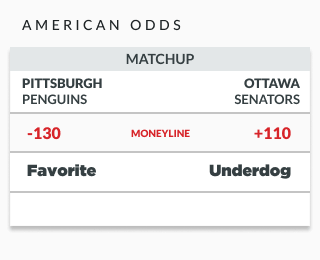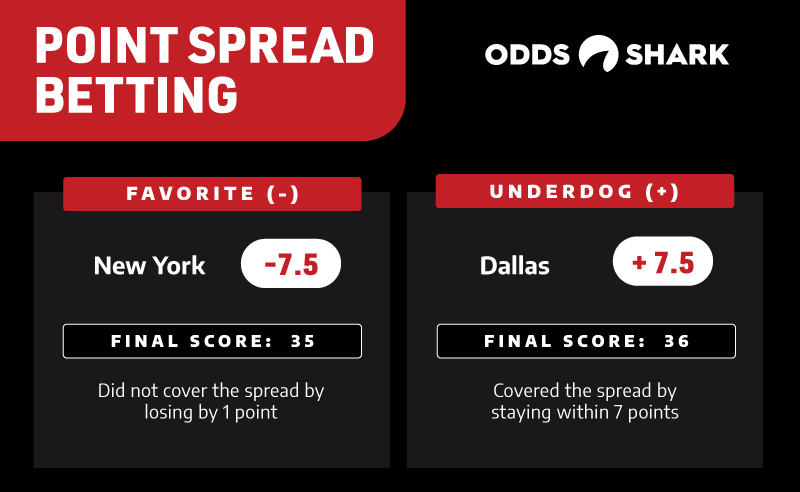Money Line Definition

- If the figure quoted is negative, the moneyline odds are quoting how much money must be wagered to win $100 (this is done if the odds are worse than even). Fractional odds of 1/4 would be quoted as −400 while fractional odds of 4/1 cannot be quoted as a negative figure. Even odds Even odds are quoted as +100 or −100.
- What is Money Line? This is a type of betting line which lays out the amount a player must wager in order to win $100.00, or the amount the player wins on a wager of $100.00. There is no point spread or handicap in this line. In order to win a moneyline bet, the team wagered on simply has to win the game.
For example, if a lot more money is wagered on the New England Patriots -3, the vig may shift from -112 to -115 and -120 before the line moves to -3.5. Run and puck lines. Football and basketball games are mostly bet using a point spread. The less popular major sports, baseball and hockey, are mostly bet using a moneyline. In an effort to make.
What is a Money Line or Straight Up Wager?
A Money Line or straight up wager is a bet on the outright winner of the game or event, without any point spread odds. A Money Line better doesn't have to worry about a team winning or losing by a certain number of points.
Oddsmakers still determine a favorite and an underdog by the overall strength of the competitor, but the odds given are based on the amount of money that needs to be put up in order to place the bet.
Example:
The bettor will receive odds that resemble these:
Money Line Definition Gambling

Colts –140

Bears +120
The (-) symbolizes which team is the favorite and the (+) indicates which team is the underdog. So in the above example, the Colts are the favorite and the Bears are the underdog. All the bettor is wagering on is who he or she thinks will win the game.
If one were to bet on the Colts, he or she would have to risk $140 to win $100 (or $105 to win $75; $70 to win $50, etc). If one were to bet on the Bears, he or she would only have to risk $83.33 to win $100 (or $62.50 to win $75; $41.67 to win $50, etc).
So while the Colts are the favorite to win the game, one would have to risk more money if they wanted to bet on them.
There are two main ways to bet sides in baseball – the moneyline and the runline. The difference between the two seems subtle, but the more you look at them, the more you appreciate their complexity. The most interesting thing about the two different bets to me is that if you ask baseball bettors what they prefer you’ll get a bunch of different answers, and most of those answers will be passionate. Some people favor betting the moneyline because runlines can present lousy value. Others play the runline because the payoffs are better and about two-thirds of games are decided by more than one run. As is the case in so many things, both opinions can be right or wrong depending upon your perspective and how you look to use them. To know what’s best for you you need to understand the two tools, and their strengths and weaknesses.
Money Line Definition Gambling
Moneyline – When you are betting a moneyline you are merely picking which team you think is going to win the game, and if you are right you get paid off. The favorite will be represented in the moneyline by a negative number. If, for example, the favorite is at -135 then you would have to bet $135 to make a profit of $100 when you win. The underdog is a positive number with a smaller absolute value than the favorite. If the favorite was at -135, then you might see the underdog at +115, which means that you would make a profit of $115 if you bet $100. The more you have to bet on the favorite to win $100, the better the perceived chances that the favorite is going to win the game.
Definition Betting Money Line

Runline – The runline functionally works the same as the moneyline, but with one big difference – your team has to win by two or more runs if you are betting the favorite, and you will still get paid off if you bet the underdog and the team loses by a single run. In other words, the runline is a moneyline attached to a point spread of 1.5 runs.
Issues to consider when choosing which tool to use
Home versus away – One thing to consider when playing the runline is where the team is being played. Road teams cover the runline more often than home teams do. There are two reasons for that – if a home team is winning they get one less at bat, and if the home team is tied or behind going into the ninth then the game ends as soon as they score a run. That doesn’t mean that you should bet road favorites on the runline and not home favorites. It does mean, though, that you need to make sure that the edge is particularly significant before betting on a home team.
Relationship between runline and moneyline – The runline and the moneyline on a given game are loosely related, but there can be a wide range of possible runlines for a given moneyline. It’s not like a certain moneyline has a particular runline that is always associated with it. The two different lines are set according to the unique characteristics of a game. Once they are set the lines are free to move separately in response to the market pressures they face. Some people will say that the runline always has less value than the moneyline, but that’s not the case. What you need to do is to see how the two lines compare so that you can spot where the value is. It’s very hard to convert a moneyline to a runline precisely because of the factors involved, but there is a good rule of thumb I use to get a sense of how the lines relate. If the home team is favored then I move the moneyline by 90 cents to get a sense of where the runline should be – i.e. a -130 moneyline should have a runline of about -1.5 +160. If the road team is favored then I move it by 55 cents. That’s a very rough estimate, but it allows you to compare and look for value. Small difference between that calculation and reality aren’t relevant, but significant differences can be indicators of value. If the potential payoff on the runline is significantly higher than the calculation then the value could be in the runline, and if it is significantly lower then the value could be in the moneyline. If you look at runlines every day and compare them to moneylines then you’ll very quickly start to get a sense of what is right and what seems out of whack just by looking at them.
Relationship to totals – The posted total in a game has a big impact on a runline, and has to be factored into your decision making process. It’s much easier for a team to win a game by two runs if they are playing in a game with a total of 11 than it is if the total is 7. The more runs that are expected in a game, the more runs a team can afford to give up and still win by two runs. The total is factored into the calculation of runlines, but you still need to consider it when you are making your decisions.
Importance of value – Value is the most important aspect of all sports betting, and runlines are no exception. If you read sports betting forums you’ll see all sorts of people making absolute arguments – ‘never bet runlines!’, or ‘runlines are for suckers!’, or ‘you’d have to be an idiot to bet moneylines instead of runlines!’. None of those arguments are even remotely true. Smart bettors who win over the long term don’t blindly make just one kind of bet. Instead, they recognize the strengths and weaknesses of each potential bet, and the analyze them to understand where the best value lies. Rejecting any particular type of bet outright is just rejecting a possibility for potential.